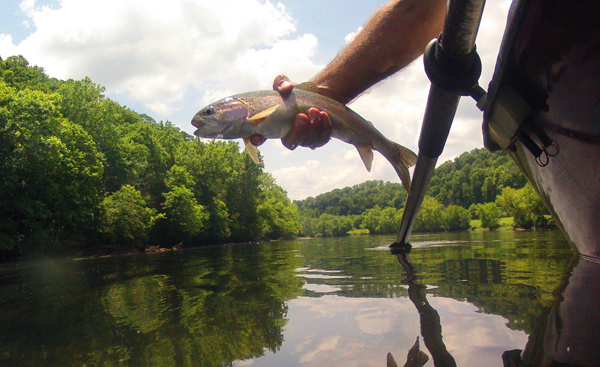Anyone who has spent much time fly fishing for trout around East Tennessee has probably heard about the Clinch River’s reputation. Just exactly what that reputation is depends on who you talk to. Depending on the day it can be the best river you’ve ever fished or the toughest damn river you’ve ever cast a fly in. But when you do catch them the fish are thick and strong.
Most of that depends on the flows you find and the hatch situation. There are only a few types of insects in the Clinch and the largest, Sulphur mayflies, are typically not much more than a #16 at most. When it comes right down to it the Clinch can be tough because most of the time you’ll be fishing it when the water is clear and shallow while the current is slow.
The fish see everything. They can count the legs on your fly. They can see the hook sticking out the tail end. Heck, the older fish can probably identify different brands of tippet.
And that’s assuming they even stick around to check out your fly. Slosh around while wading, slap the water with your cast, or get a little rambunctious with the oars and you won’t have to worry what you fly looks like because there won’t be any fish around to care.
Right now there are pretty good flows for waders and floaters on the Clinch. TVA is desperately trying to complete work on the weir dam while needing to manage relatively high reservoir levels. That means the water needs to be low in the day while work is complete but flows are high at night. We’ve been putting in with high water in the morning and floating with the ebbing tide.
Sulphurs are showing up in the afternoons and the hatch remains strong. A word of advice – Don’t insist on dry fly fishing. There are certainly fish that will take a dry fly, but most will take a nymph much better even as you see them rise. Pheasant Tail and Zelon Nymphs have been our best patterns.

